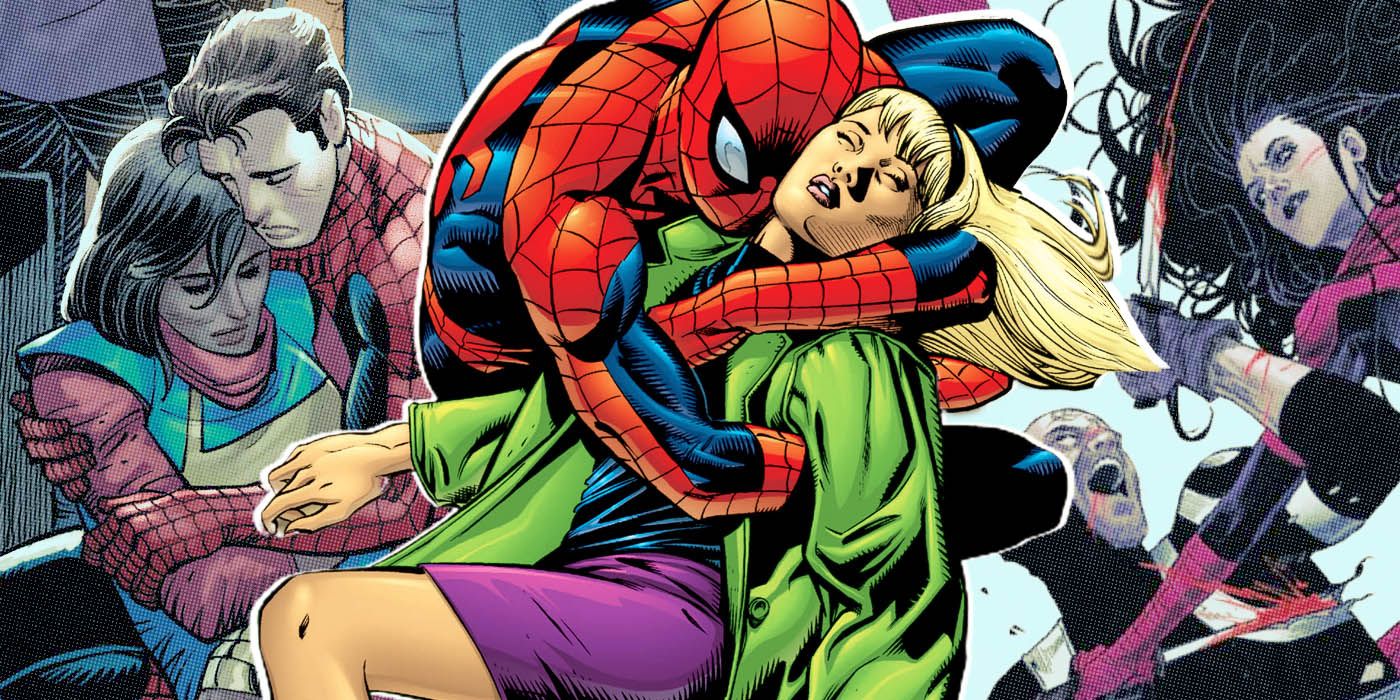Comic book deaths can be heroic or brutal but they are not always final. If the storyline demands it or the timing is right, characters regularly come back to life. As Professor X of the X-Men pointed out, “There are no pearly gates, but instead revolving doors.” Although he was talking about Krakoan resurrection at the time, this has been true for popular Marvel Comics characters for decades. However, fridging is the most heinous form of death in comic books, and often its most permanent. Treated as tragic deaths, fridgings provide the motivation to break heroes out of their shells and grow as characters. In reality, though, they perpetuate a storytelling trope that enables the victimization of female romantic interests.Writer Gail Simone coined the term “Women in Refrigerators” as a reference to the shocking fate of Kyle Rayner’s girlfriend, Alexandra DeWitt, at the hands of the supervillain Major Force in Green Lantern #54 (by Ron Marz, Steve Carr, Romeo Tanghal, Steve Mattsson and Albert DeGuzman). From then on, the term “Fridging” denoted the grim fate of any female character whose death’s sole purpose is to give the protagonist a sense of moral responsibility or motive for change. Marvel Comics is as guilty of indulging in this trope as any media conglomerate. In fact, across the company’s illustrious history, they did a lot to create and firmly establish this toxic trope.Before the House of Ideas became known as Marvel Comics, it operated under the name Timely Comics, where it introduced characters like the Human Torch, Namor the Sub-Mariner, and Captain America. In the Golden Age of comics, fridging was not an endemic problem since the medium was still in its formative days, and writers were experimenting with a variety of new storylines. At the same time, comic book creators were predominantly men, and women were often pushed to the sidelines, in stories and reality, and in superhero tales they mostly played the part of Damsel in Distress. Fridging goes back to the Silver Age when Nick Fury lost his fiancé Pamela Hawley to German bombers in a 1965 issue of Sgt. Fury and His Howling Commandos. Predictably, he went on a rampage and killed General Von Krummpt in the next issue, dedicating the deed to his dead lady love.RELATED: 10 Deaths That Changed Marvel Comics ForeverRELATED: She-Hulk Just Referenced a Serious – and Problematic – Superhero Trope
Comic book deaths can be heroic or brutal but they are not always final. If the storyline demands it or the timing is right, characters regularly come back to life. As Professor X of the X-Men pointed out, “There are no pearly gates, but instead revolving doors.” Although he was talking about Krakoan resurrection at the time, this has been true for popular Marvel Comics characters for decades. However, fridging is the most heinous form of death in comic books, and often its most permanent. Treated as tragic deaths, fridgings provide the motivation to break heroes out of their shells and grow as characters. In reality, though, they perpetuate a storytelling trope that enables the victimization of female romantic interests.
Writer Gail Simone coined the term “Women in Refrigerators” as a reference to the shocking fate of Kyle Rayner’s girlfriend, Alexandra DeWitt, at the hands of the supervillain Major Force in Green Lantern #54 (by Ron Marz, Steve Carr, Romeo Tanghal, Steve Mattsson and Albert DeGuzman). From then on, the term “Fridging” denoted the grim fate of any female character whose death’s sole purpose is to give the protagonist a sense of moral responsibility or motive for change. Marvel Comics is as guilty of indulging in this trope as any media conglomerate. In fact, across the company’s illustrious history, they did a lot to create and firmly establish this toxic trope.
Before the House of Ideas became known as Marvel Comics, it operated under the name Timely Comics, where it introduced characters like the Human Torch, Namor the Sub-Mariner, and Captain America. In the Golden Age of comics, fridging was not an endemic problem since the medium was still in its formative days, and writers were experimenting with a variety of new storylines. At the same time, comic book creators were predominantly men, and women were often pushed to the sidelines, in stories and reality, and in superhero tales they mostly played the part of Damsel in Distress. Fridging goes back to the Silver Age when Nick Fury lost his fiancé Pamela Hawley to German bombers in a 1965 issue of Sgt. Fury and His Howling Commandos. Predictably, he went on a rampage and killed General Von Krummpt in the next issue, dedicating the deed to his dead lady love.
#History #Fridging #Marvel #Comics
Note:- (Not all news on the site expresses the point of view of the site, but we transmit this news automatically and translate it through programmatic technology on the site and not from a human editor. The content is auto-generated from a syndicated feed.))



